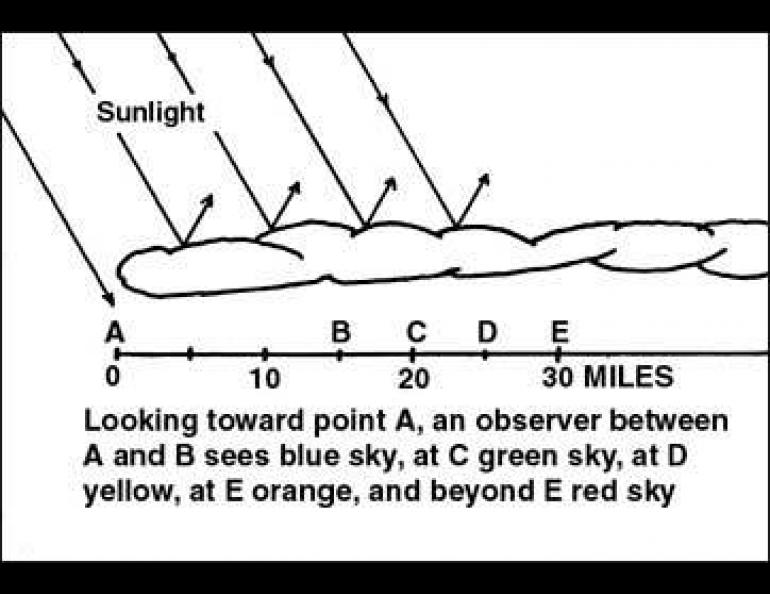
Pre-Storm Green Sky
Changes in sky color have long been known to portend change in the local weather. There is good reason for this association since changes in sky color can be caused by the movement of heavy cloud decks, and heavy clouds often produce rain, snow and lightning.
Such an instance was reported by residents of Kodiak who saw a peculiar green sky for about a half-hour during late evening in July 1978. Immediately following the appearance of the green sky, a rainstorm with much thunder and lightning struck the area.
Sky coloration is caused by the scattering of sunlight as it passes through the atmosphere. As we view the sky it is the scattered light that we are seeing. If there are no clouds in the sky, the sun illuminates all of the air near an observer and thereby causes his eye to receive scattered light from all parts of the atmosphere.
But the brightest light is that which has traveled the shortest distance through the atmosphere, the light that comes down to the observer from most nearly overhead. This light is bluish because blue and violet light is scattered much more than the other colors of the solar spectrum, green, yellow, orange and red.
Scattered light that comes to the eye from parcels of air located different distances away are richest in various colors. Whereas the scattered light coming to the eye from the overhead sky is richest in blue light, that which comes from 20 miles (30 kilometers) away is richest in green light. Light from 25 miles away is richest in yellow, that from 30 miles away is richest in orange, and that from a greater distance is richest in red. Consequently, the sky near the rising or setting sun is orange and red since the brightest scattered light is coming from air many miles from the observer.
Hence if a heavy cloud deck covers an observer's sky out to a distance of about 20 miles away, the light the observer will see will have green color because the clouds are shielding out the blue light scattered from nearby. If the cloud deck expands out to successively cover the sky to distances 25, 30 and more miles away, the observer will see the color of light below the clouds change to yellow, orange and then more reddish.
Green sky like the one seen at Kodiak is seen far less often than yellow, orange and red skies simply because the exact cloud cover extent required (to about 20 miles) does not occur all that often. But in high latitudes the sun is low to the horizon so much of the time that beautiful yellow, orange, and red skies are often seen.





